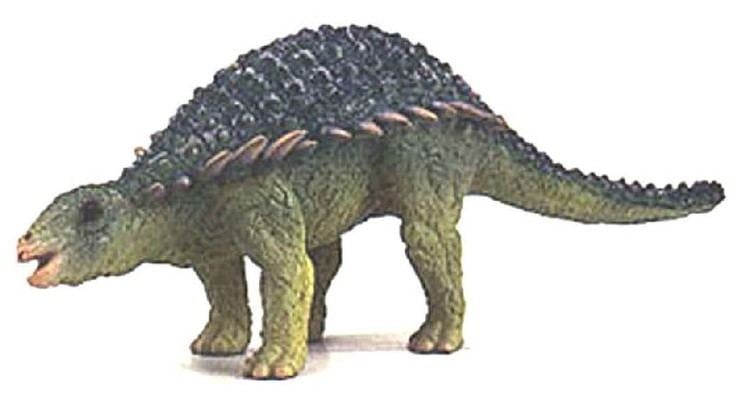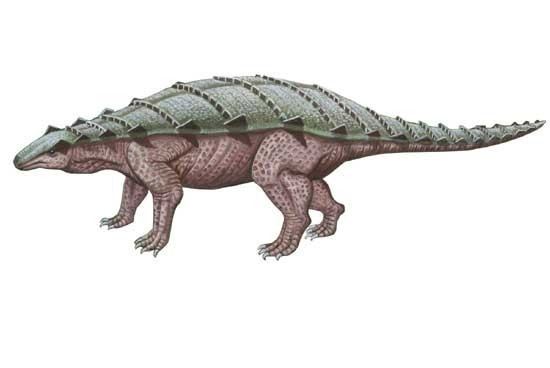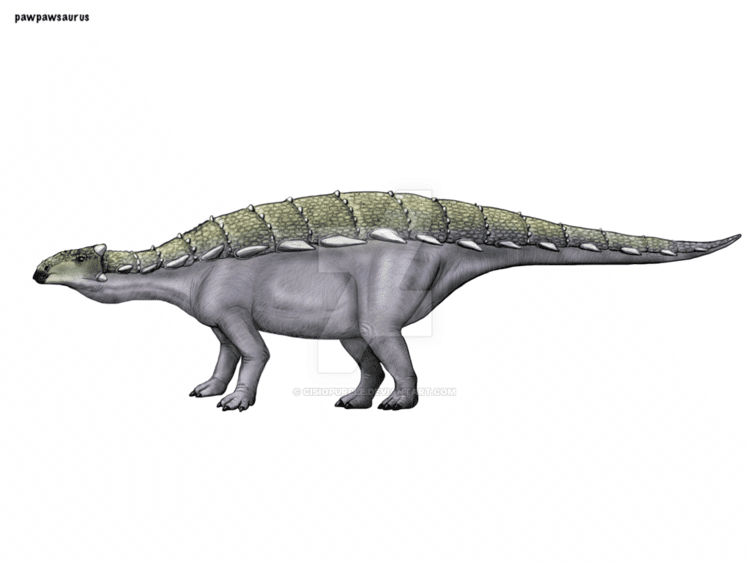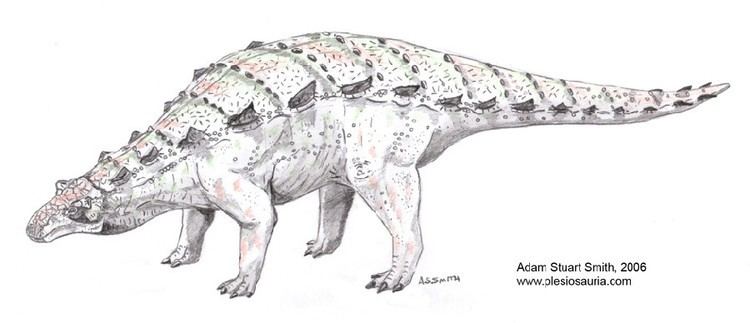Scientific name Pawpawsaurus campbelli Rank Genus | Class Reptilia Species †P. campbelli Phylum Chordata | |
 | ||
Similar | ||
The pawpawsaurus
Pawpawsaurus, meaning "Pawpaw Lizard", is a nodosaurid ankylosaur from the Cretaceous (late Albian) of Tarrant County, Texas, discovered in May 1992. The only species yet assigned to this taxon, Pawpawsaurus campbelli, is based on a complete skull (lacking mandibles) from the marine Paw Paw Formation (Wachita Group).
Contents

DescriptionEdit

Pawpawsaurus is known from a relatively well preserved and complete skull. The skull is complete enough for a 2016 study to be able to identify and reconstruct the brain, nasal cavities and inner ear of the specimen, and CT scan it to find new anatomical features.

The brain of Pawpawsaurus is very similar to other ankylosaurians, but along with more derived taxa it is most different from Kunbarrasaurus. The brain is 30% of the skull length, very similar to Panoplosaurus, higher than Euoplocephalus, and lower than Kunbarrasaurus. The brain of Pawpawsaurus is 96 millimetres (3.8 in) long and 35 millimetres (1.4 in) wide. The inner ear is also similar to ankylosaurians to the exclusion of Kunbarrasaurus, being 27 millimetres (1.1 in) tall and 15.5 millimetres (0.61 in) wide at the level of the semicircular canals. The nasal cavities of Pawpawsaurus resemble that of Panoplosaurus and Euoplocephalus, although the thin dividing medians are not preserved as they were likely cartilaginous.
DiscoveryEdit

Pawpawsaurus was found in the Paw Paw Formation in Tarrant County, Texas. A complete skull is the only specimen, from which the binomial was named Pawpawsaurus campbelli. The Paw Paw Formation has produced another nodosaurid, Texasetes pleurohalio (Coombs, 1995), which may prove to be a senior synonym of Pawpawsaurus. This is the only nodosaurid known to have possessed the bony eyelids commonly found in ankylosaurids. The skull of Pawpawsaurus bears some notable similarities to that of Silvisaurus, such as the presence of teeth in the premaxilla and the restriction of the osseous secondary palate to the rostral portion of the palatal region.
ClassificationEdit

Based on the dimensions of the skull, Pawpawsaurus is believed to have been approximately 4.5 meters in length. Vickaryous et al. (2004) have stated that "Sauropelta edwardsorum, Silvisaurus condrayi, and Pawpawsaurus campbelli form a basal polytomy nested deep to Cedarpelta."
PalaeobiologyEdit

Pawpawsaurus was primitive in regards to its sensory abilities when compared to later ankylosaurs. CT scans of its skull and brain by Paulina-Carabajal and Louis Jacobs et al. revealed that Pawpawsaurus' hearing was on par with that of modern crocodilians, indicating that its hearing was relatively poor. Its sense of smell meanwhile, while not as advanced as that of later ankylosaurs, was still more powerful and acute than many of the theropods existent at the time thanks to its large nasal cavities. The enlarged nasal cavities of Pawpawsaurus would also likely have been useful for cooling blood that was entering the brain, finding food and potential mates, or alerting it to danger.

